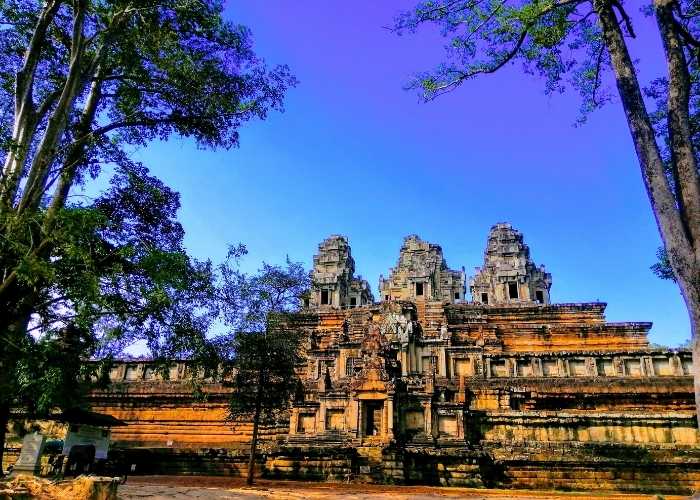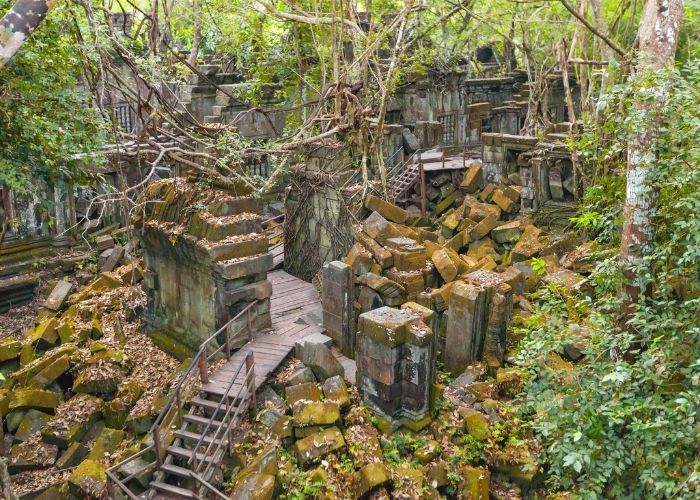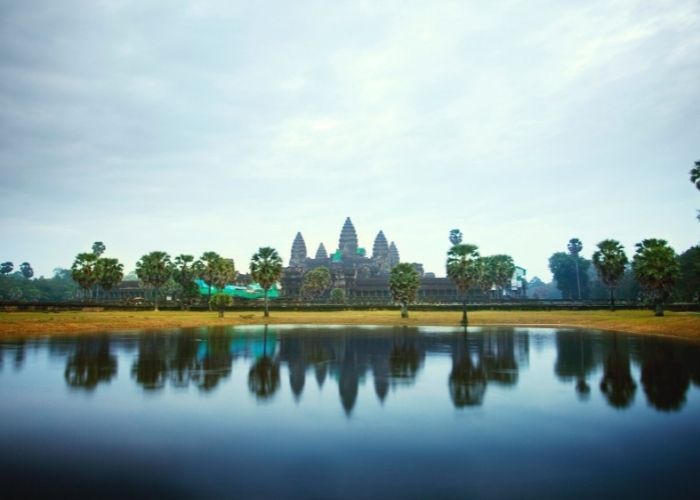Ancient Angkor Empire - Paradise on Earth
It’s five o’clock in the morning, and the Sun won’t rise for another two hours. Tourists desire to get the best morning view at Angkor Wat. The term “encore” dates back to the 12th century.
The tower in the temple’s center, shaped like Lotus blossoms, is the Angkor Empire’s and Cambodia’s national symbol.
With a 200-meter-wide moat encompassing an area of 40,000 square meters and a nearly 6,000-meter-long circumference, Angkor Wat is the world’s largest religious complex. Most visitors interested in learning about Angkor culture begin their journey at Angkor Wat, also known as the Temple of Angkor.
In the jungle behind Encore Want, some 600 architectural sites create a city that was once the largest in the world. The Khmer people began building great civilizations in the seventh century, constructing temples and palaces out of sandstone bricks, expressing their beliefs in these wonderful monuments, and dedicating themselves and the Empire to their gods.


A million people might live in this capital. It possessed cutting-edge technology as well as distinctive oriental philosophy and art. Nonetheless, the great city was eventually abandoned by its creators to the enormous jungle—as the Angkor civilization crumbled, these spectacular structures got buried, collapsed, and destroyed.
However, when explorers discovered them in the nineteenth century, they astounded the entire world. These ruins of a society buried in the bush are a link to a bygone era, a paradise on Earth.
The Angkor ruins trip takes you through jungles and buildings.
Visitors are required to utilize the proper means of transportation.
The tuk-tuk can get to every part of the vast complex. Travelers can choose to pay based on miles or rent a tuk-tuk by the day.
Angkor Wat is the most prominent temple in the area; it is a shrine to Vishnu, one of Hinduism’s biggest deities, who is said to have saved the world from danger.
The story of Vishnu is engraved on the passages of Angkor Wat on this 49-meter-long relief. Under Vishnu’s command, 92 Devas and 88 acerous seek immortality’s nectar in an ocean of milk. They used Mount Mandara as a staff and the serpent Vasuki as a rope to churn the ocean day and night.
Vishnu eventually receives the immortality nectar, but the devas and asuras begin battling over it, which eventually falls into the hands of the Devas.


Enjoy incredible opportunities for 2 day Angkor tour itineraries to visit the most impressive temples of the Ancient city of Angkor!
There are 216 carvings of his face on Bayon's 54 towers.
He had more structures built during his reign than all of his predecessors combined.
The Angkor Empire was transitioning from Hinduism to Buddhism at this period, which has since become the most important religion of the Khmer people.
This diligent and ambitious King had fearsome statues of Khmer warriors fashioned in relief around the balloon’s periphery, which spanned over 500 meters. The sculpture and faces symbolize the cultural and military victories of King Jayavarman seven.
The Bayon relief also depicts around 300 rarely-seen scenes from everyday life in this world-class metropolis. The Khmer people live in a peaceful urban setting.
Another valuable relief is hidden behind a little tunnel depicting construction workers moving stones with rope and elevating them with a machine. The Khmer people created these amazing marvels using only the most basic tools available at the time.
Cambodia is an agricultural country.
Because Cambodia is an agricultural country, fields surround Angkor. Farmers were required to provide green for a million people in order to support this huge population at the time. Tropical regions have only dry and wet seasons from May through November.
Farmers look forward to the dry season, which lasts half a year after 6 months of torrential rain. Temperatures reach approximately 40 degrees Celsius, and the landscape becomes parched and barren.
The Khmer people exhibited tremendous perseverance in the face of these natural calamities. They built two large reservoirs on the plain east VAR and west beret that are 8 kilometers long and 2 kilometers broad and can retain 48 million cubic meters of water, which is ample for cultivation during the dry season. These huge reservoirs have supplied benefits for nearly 1,000 years. Six kilometers from the West, the Khmer people, built a new settlement with a population of somewhat more than 100,000 people.
Siem Reap has evolved into the entry point to the Angkor Wat ruins. If the temple represents tourists’ desire for the ancient Angkor civilization, Siem Reap serves as a link between the past and the present.
The Apsara fairies
The Khmer people worshiped their gods in the Angkor temples, and the reliefs depicted marvels. Apsara fairies are the most beautiful beings on the planet, having been born in the ocean of milk.
They are the embodiment of clouds and seas, as shown in the apsara dance.
This dance has only been around for a short time. Queen Sisowath Kossamak, the current King’s grandmother, invented the apsara dance in the mid-twentieth century; inspired by Angkor reliefs and traditional Khmer dance, she blended Khmer history and culture and created the apsara dance. The apsara dance is a traditional component of royal events and national festivities. Through the dance, the lavishly adorned dancers pray for the nation and the people.
The once-mighty Angkor Empire could not escape the cycle of history, and theories dispute as to why the Empire fell. Still, the broad consensus is that it was caused by a combination of climatic, topographical, and human reasons.
One thing is certain, however: the forest that once fed the Empire eventually devoured it. Tetra Millia snooty flora is a massive deciduous tree found in rainforests that can produce massive amounts of seeds each year. Some of them, though, grow.
Those that survive thrive swiftly.
The jungle’s stealthy war began with thousands of seedlings and millions of stones. The most important battlefield was the Ta Prohm, whose walls eventually crumbled due to their inability to sustain the weight of the trunk.
Most Angkor structures were also damaged, but the two parties eventually reached an agreement inside the top prompt.
For nearly 800 years, the stem has grown into a natural pillar that has preserved and maintained historic architecture.
This exact equilibrium demonstrates the wonderful coexistence of human-divine and natural power.
By carving his narratives of Buddhist promotion, temple construction, and irrigation system, has boosted the appeal of anchoring ruins.
Despite the fact that Jayavarman 7 was the most ambitious King of the Angkor Empire, the institutions he built during his reign dissolved nearly quickly after his death.
The repair of the Angkor ruins began as soon as they were found. Still, our exploration of the world’s cultural heritage has only just begun!









